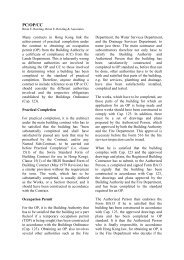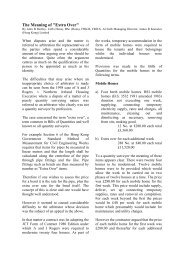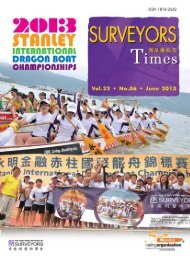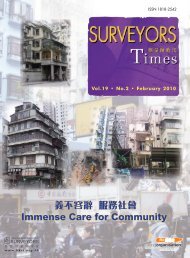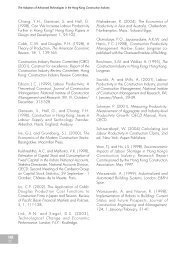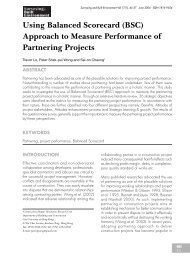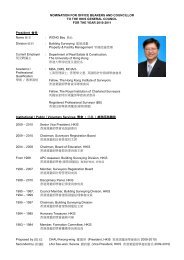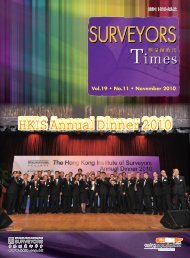Special issue to commemorate the 70th Anniversary of the Battle of ...
Special issue to commemorate the 70th Anniversary of the Battle of ...
Special issue to commemorate the 70th Anniversary of the Battle of ...
You also want an ePaper? Increase the reach of your titles
YUMPU automatically turns print PDFs into web optimized ePapers that Google loves.
Chinese Eyes on British Tanks: His<strong>to</strong>rical Verification <strong>of</strong> a War Heritage<br />
and would serve no useful military purpose. This<br />
unceremonious fate <strong>of</strong> obsolete Mark IV tanks is<br />
described by tank his<strong>to</strong>rian David Fletcher in his book<br />
British Mark IV Tank:<br />
The vast majority <strong>of</strong> war surplus [Mark IV]<br />
tanks were simply shipped back <strong>to</strong> Boving<strong>to</strong>n<br />
and scrapped, although a significant number still<br />
remained on <strong>the</strong> Western Front, <strong>to</strong>o damaged<br />
<strong>to</strong> move but <strong>to</strong>o much <strong>of</strong> a nuisance <strong>to</strong> leave<br />
behind. Thus <strong>the</strong> Tank Corps raised a special<br />
salvage detachment which, for many months after<br />
<strong>the</strong> end <strong>of</strong> hostilities, worked steadily across <strong>the</strong><br />
battlefields, blowing up wrecks where it was safe<br />
<strong>to</strong> do so or, in a few cases, burying <strong>the</strong>m where it<br />
was not. (Fletcher 2007:43)<br />
While <strong>the</strong> Mark IV tanks have all gone, except for a<br />
handful that still survive in museums, <strong>the</strong> “Chinese<br />
Eyes” have lived on <strong>to</strong> <strong>the</strong> present day. Over <strong>the</strong> years,<br />
legends and myths have been spun about <strong>the</strong> “Chinese<br />
Eyes,” including one that considers <strong>the</strong>m a common<br />
symbol for tanks <strong>of</strong> <strong>the</strong> D (later 4th) Battalion. In<br />
fact, <strong>the</strong> eyes were unique <strong>to</strong> Tank 2341 “Fan Tan” <strong>of</strong><br />
<strong>the</strong> F Battalion (renamed <strong>the</strong> 6th Battalion in January<br />
1918) during World War I. It was after <strong>the</strong> war that <strong>the</strong><br />
“Chinese Eyes” were inherited like a precious heirloom<br />
by a succession <strong>of</strong> tank units, and <strong>the</strong>y remain <strong>to</strong>day<br />
with <strong>the</strong> 1st Royal Tank Regiment.<br />
CONCLUSION: THE CHANGING<br />
“CHINESE EYES”<br />
The design <strong>of</strong> markings applied on military vehicles is<br />
subject <strong>to</strong> change, and, as such, tracking <strong>the</strong> changes is<br />
essential <strong>to</strong> achieving an understanding <strong>of</strong> <strong>the</strong> past and<br />
present <strong>of</strong> <strong>the</strong> tradition, and <strong>the</strong>reby an indication <strong>of</strong> its<br />
future.<br />
In <strong>the</strong> case <strong>of</strong> <strong>the</strong> “Chinese Eyes” marking, <strong>the</strong> author<br />
has managed <strong>to</strong> discover at least four variations: <strong>the</strong><br />
very first and only original design used during World<br />
War I (Figure 4); <strong>the</strong> second design possibly used<br />
during <strong>the</strong> inter-war years as depicted on <strong>the</strong> Mark V<br />
tank on display at <strong>the</strong> Imperial War Museum (Figure 5);<br />
<strong>the</strong> third design seen on tanks in World War II and <strong>the</strong><br />
Korean War (Figure 6); <strong>the</strong> fourth and current design<br />
dates from <strong>the</strong> latter part <strong>of</strong> <strong>the</strong> Cold War <strong>to</strong> <strong>to</strong>day<br />
(Figure 7). Through research <strong>of</strong> pho<strong>to</strong>graphs <strong>of</strong> <strong>the</strong><br />
“Chinese Eyes” painted on tanks <strong>of</strong> different eras, <strong>the</strong><br />
four design variations are accurately reproduced and<br />
presented as <strong>the</strong> final illustrations for this paper.<br />
It is hoped that this research will find useful application<br />
in <strong>the</strong> res<strong>to</strong>ration <strong>of</strong> vintage tanks, which are significant<br />
military artefacts that hold much appeal <strong>to</strong> visi<strong>to</strong>rs<br />
in any war museums and, as such, deserve <strong>to</strong> be<br />
accurately res<strong>to</strong>red for <strong>the</strong> correct interpretation <strong>of</strong><br />
his<strong>to</strong>ry.<br />
Figure 4a & 4b: The original design <strong>of</strong> <strong>the</strong> “Chinese Eyes” that first appeared in 1917, painted on <strong>the</strong> Mark IV tank<br />
donated by Chinese-Singaporean businessman Eu Tong Sen. (Original drawings by Lee Ho Yin)<br />
Figure 5a & 5b: The version <strong>of</strong> <strong>the</strong> “Chinese Eyes” painted on <strong>the</strong> Mark V tank exhibited at <strong>the</strong> Imperial War<br />
Museum, London. (Original drawing and pho<strong>to</strong> by Lee Ho Yin)<br />
SBE<br />
18




